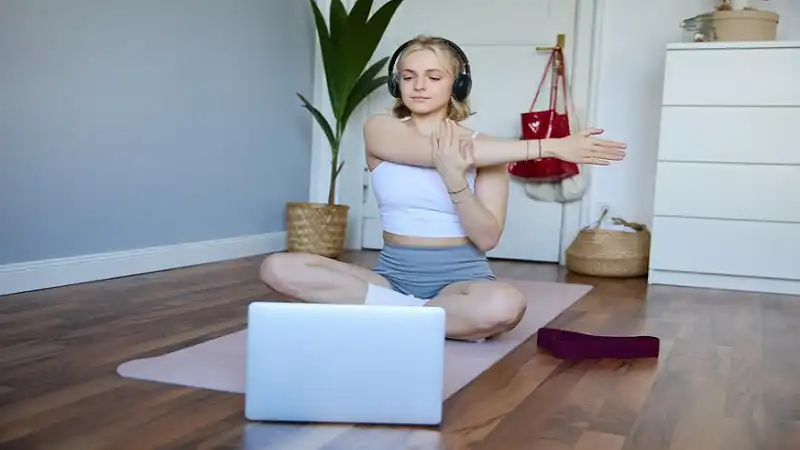Meditation is a powerful tool for achieving mental clarity, emotional balance, and spiritual growth. While traditional meditation techniques often involve focusing on the breath or quieting the mind, visualization offers an additional layer of depth to your practice. By harnessing the power of your imagination, you can enhance your meditation experience, deepen your awareness, and create positive transformations in your life. In this article, we explore how visualization can elevate your meditation practice and offer practical steps to integrate it into your routine.
What Is Visualization in Meditation?
Visualization in meditation refers to the practice of using mental images to enhance focus, manifest intentions, or induce relaxation. Whether you’re picturing a peaceful nature scene, imagining yourself achieving a goal, or visualizing healing energy, this technique taps into the mind-body connection to create powerful mental states. In many meditation practices, visualization can help:
- Calm the mind: Redirecting focus to peaceful imagery helps quiet the mental chatter.
- Manifest intentions: By vividly imagining your goals, you align your thoughts with your desired outcomes.
- Heal emotional wounds: Visualization can help release stress, anxiety, and negative emotions by imagining a sense of peace or energy clearing blockages.
For practitioners of yoga and meditation, the power of visualization can serve as an incredibly potent tool, enhancing both the mind-body connection and overall well-being.
The Benefits of Visualization in Meditation
1. Increased Focus and Clarity
Meditation can sometimes feel challenging, especially when the mind wanders. Visualization creates a focal point, making it easier to concentrate. By focusing on a mental image, you direct your thoughts and energy toward a specific goal or peaceful state of being. This heightened concentration allows you to deepen your meditation practice and experience greater mental clarity.
2. Enhanced Emotional Healing
Visualization can facilitate emotional healing by helping you confront and release negative emotions, stress, or trauma. By picturing yourself in a peaceful or empowering scenario, you can shift the emotional charge around distressing memories or feelings. Many individuals use this technique in guided meditations to work through specific emotional blockages and achieve greater inner peace.
3. Manifestation and Goal Achievement
Visualization is also a powerful tool for manifestation. Athletes, performers, and individuals working toward specific life goals use mental imagery to visualize success. In meditation, you can vividly picture the outcome you desire—whether it’s personal, professional, or spiritual—and by doing so, you align your mental and energetic state with your aspirations. This can help you take inspired action and make decisions that bring you closer to your goals.
4. Stress Reduction and Relaxation
Guided visualization practices, where you imagine yourself in serene locations or situations, can help you lower stress levels and induce relaxation. By focusing on these peaceful images, you can shift your mind away from daily stressors and enter a calm, centered state. Visualization is especially effective for those struggling with anxiety or restlessness.
5. Deepened Connection with the Present Moment
Visualization practices not only enhance the depth of your meditation but also help you engage more fully with the present moment. Whether you are visualizing a mantra, a light, or your body in a particular pose, these images serve as anchors to keep you present, preventing the mind from drifting into distractions.
Practical Steps to Use Visualization in Your Meditation Practice
Now that we’ve explored the benefits of visualization, let’s look at some practical steps to incorporate it into your meditation routine, whether you’re a beginner or experienced practitioner.
Step 1: Set Your Intention
Before starting your meditation, it’s essential to set a clear intention for the session. Ask yourself: What do I want to achieve in this meditation? Is it relaxation, healing, manifestation, or simply presence?
- If you’re aiming to relax, you might visualize a peaceful beach, a forest, or any environment that helps you unwind.
- If you’re focusing on emotional healing, you might picture yourself releasing negative emotions or imagine a light or energy cleansing your body.
- If you’re manifesting a goal, visualize yourself successfully achieving it in as much detail as possible.
By setting a clear intention, you provide direction to your visualization practice and help your mind stay focused.
Step 2: Find a Comfortable Space
Visualization meditation requires a quiet and comfortable space free from distractions. Whether you prefer sitting on a cushion, lying down, or practicing in a yoga pose, ensure that your posture supports deep breathing and relaxation. A comfortable position helps you stay grounded and present, allowing your body to relax fully.
Step 3: Breathe Deeply to Center Yourself
Before diving into your visualization, take a few moments to focus on your breath. Breathe deeply through your nose, filling your lungs completely, and exhale slowly. As you inhale, imagine drawing in calmness, and as you exhale, visualize releasing tension. This helps quiet your mind and prepares you for the visualization practice.
Step 4: Begin Your Visualization
Start by creating a vivid mental image related to your intention. For example:
- If you’re relaxing: Imagine yourself in a peaceful environment—perhaps lying on a soft grassy field or walking barefoot along the shore. Feel the sensations of the environment—the warmth of the sun, the cool breeze, the sound of gentle waves.
- If you’re healing: Picture a warm light or energy entering your body. Imagine it moving through areas that need healing, dissolving tension, and restoring balance.
- If you’re manifesting a goal: Visualize yourself living your desired outcome. See the process unfolding with every step, feeling the emotions of accomplishment, and imagining how your life will change once your goal is achieved.
The key is to engage all your senses in the visualization. The more vivid and detailed you make the image, the stronger the mental connection.
Step 5: Use Affirmations to Strengthen Your Visualization
Incorporating affirmations can amplify the power of your visualization. As you continue to visualize, silently repeat positive affirmations that align with your intention. For instance:
- “I am calm and at peace.”
- “I am healing with every breath.”
- “I am confident in my ability to manifest my dreams.”
These affirmations reinforce the mental images you are visualizing, helping you stay aligned with your intention.
Step 6: Allow the Visualization to Flow Naturally
Once you’ve entered into your visualization, allow the images to flow naturally. Don’t force the process or try to control the images too much. Trust your mind to guide you to the necessary visualization for the moment. Sometimes, your body may lead you to different images or feelings that you need for healing or growth.
Step 7: Close the Practice Gently
As your meditation session comes to an end, gradually bring your awareness back to the present moment. Begin by deepening your breath, slowly moving your fingers and toes, and gently opening your eyes. Take a few moments to reflect on the feelings and insights that came up during the practice, and set an intention to carry the positive energy with you into the rest of your day.
Tips for Deepening Your Visualization Practice
- Practice Regularly: Like any meditation technique, visualization becomes more effective with consistent practice. Set aside a few minutes each day to practice and refine your skills.
- Use Guided Visualizations: If you’re new to visualization, consider using guided meditation apps or videos. These resources can help you get comfortable with the practice and provide inspiration for creating your own mental images.
- Incorporate Movement: For those who practice yoga alongside meditation, try integrating visualization with movement. Imagine specific energy centers (chakras) being activated as you move through poses, or visualize yourself moving through a specific yoga flow with ease.
- Cultivate Patience: Visualization takes time and practice to master. If you find it difficult to create clear mental images, don’t be discouraged. Over time, your ability to visualize will improve, and you will begin to experience deeper levels of connection and healing.
Conclusion
Visualization is a powerful tool for enhancing your meditation practice. By incorporating vivid mental imagery, you can foster relaxation, emotional healing, focus, and manifestation of your goals. Whether you’re practicing yoga or simply meditating, visualization offers a dynamic way to elevate your mindfulness practice and create positive changes in your life.
At SmartFitYoga, we encourage you to explore the potential of visualization in your meditation routine. Take these practical steps and incorporate them into your practice, allowing the power of your imagination to help you achieve greater peace, clarity, and fulfillment.
Remember, the mind is a powerful tool, and when you learn to harness its potential through visualization, you unlock a deeper connection with yourself and your aspirations.










